Reset password email template
Password troubles shouldn’t slow users down. A well‑designed reset email can restore account access in <60 seconds on average (Stripe Identity, 2024) while blocking phishing attempts.
This template balances iron‑clad security with friction‑free UX: one‑click reset, clear expiry, and reassurance copy that keeps trust sky‑high.
6 Stunning Mockups of Reset password email template template
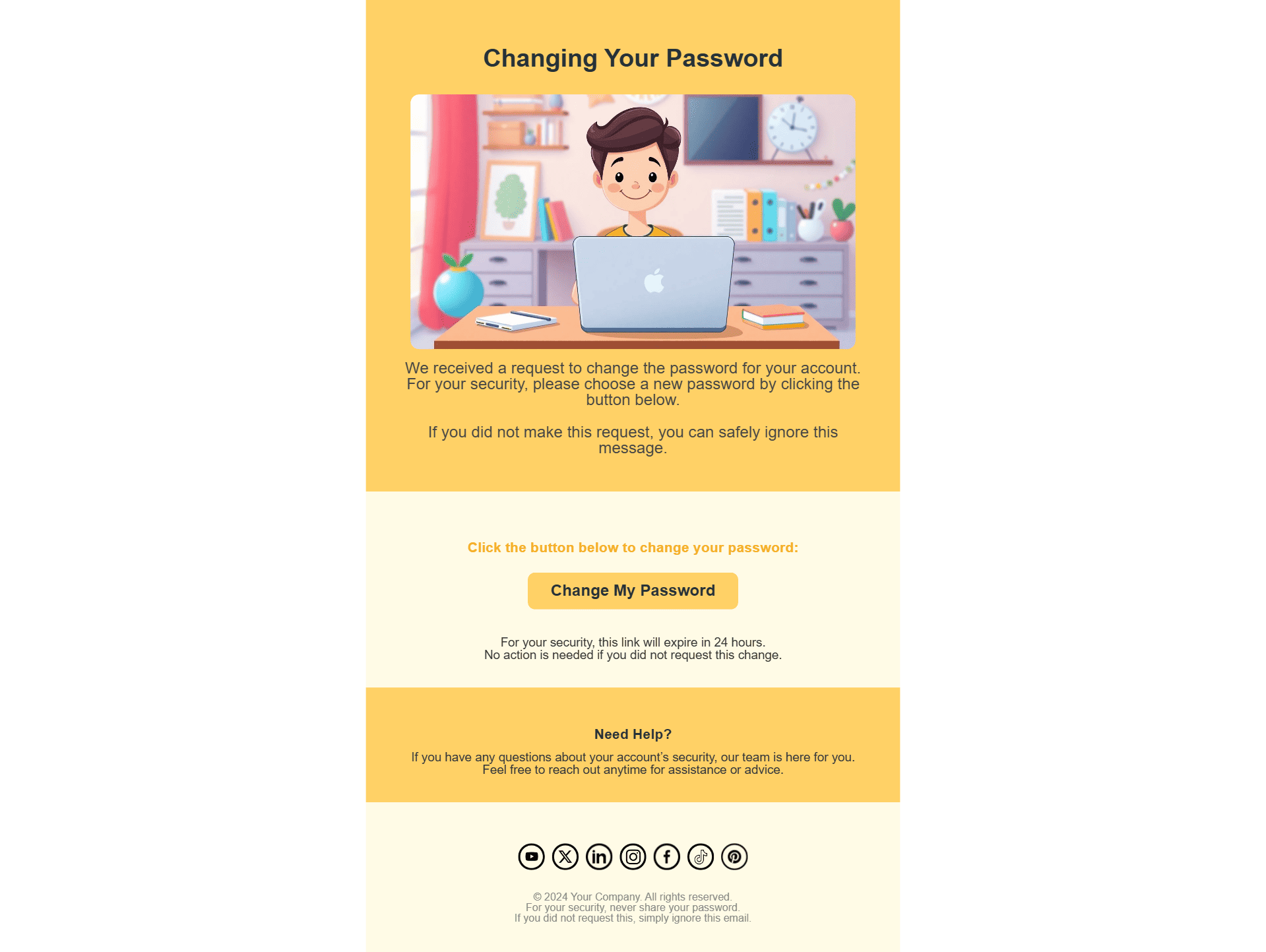
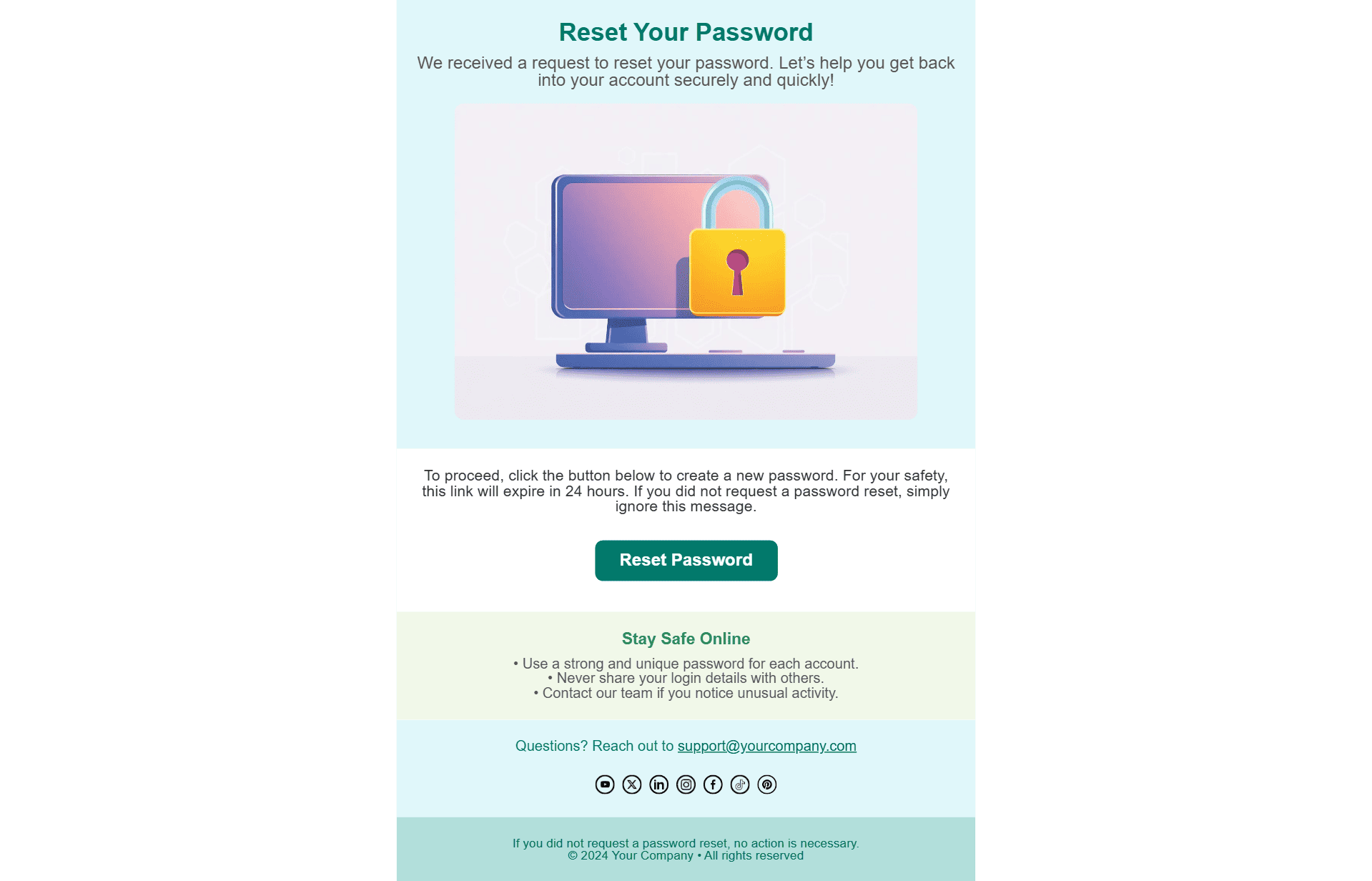
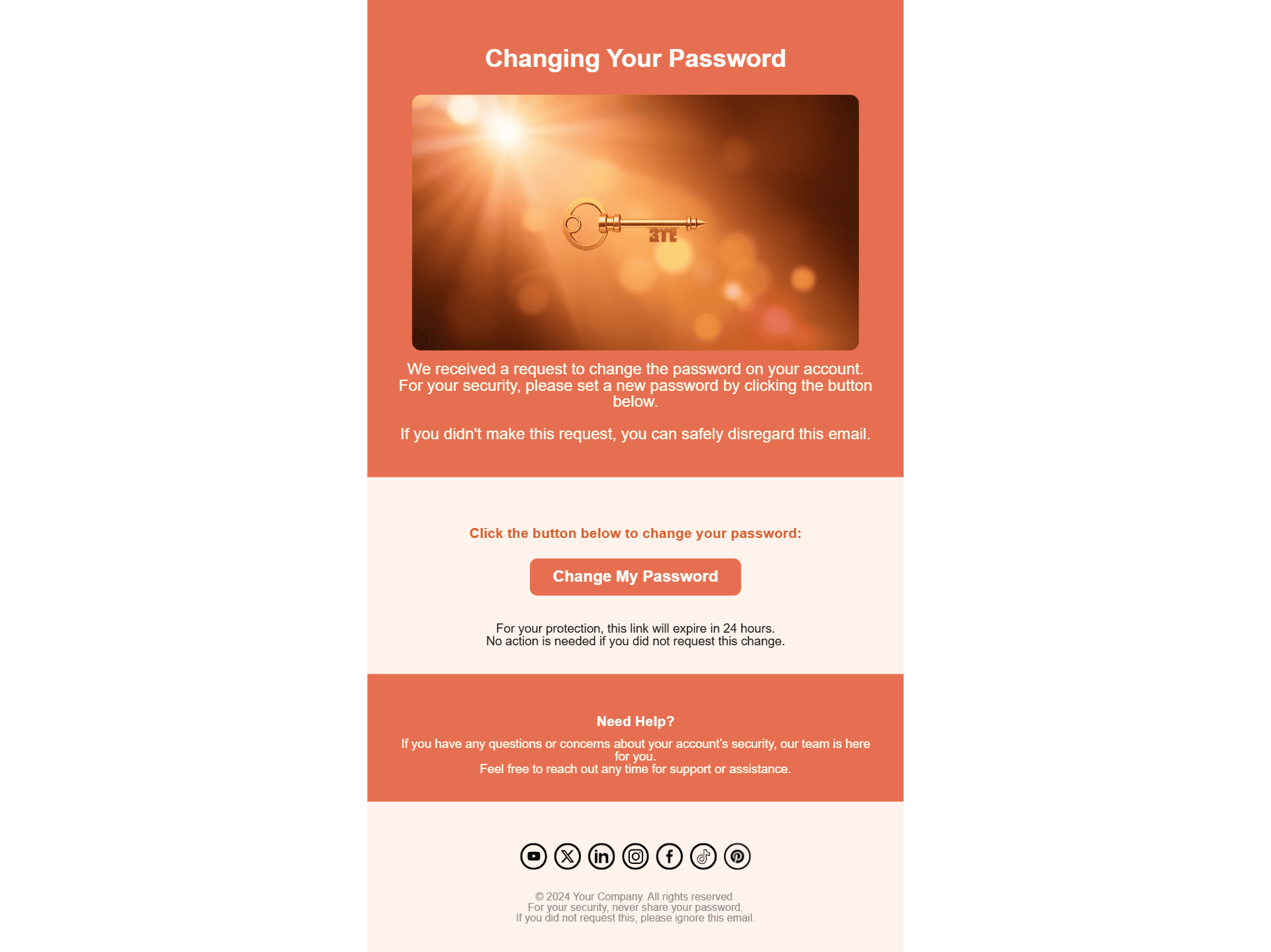



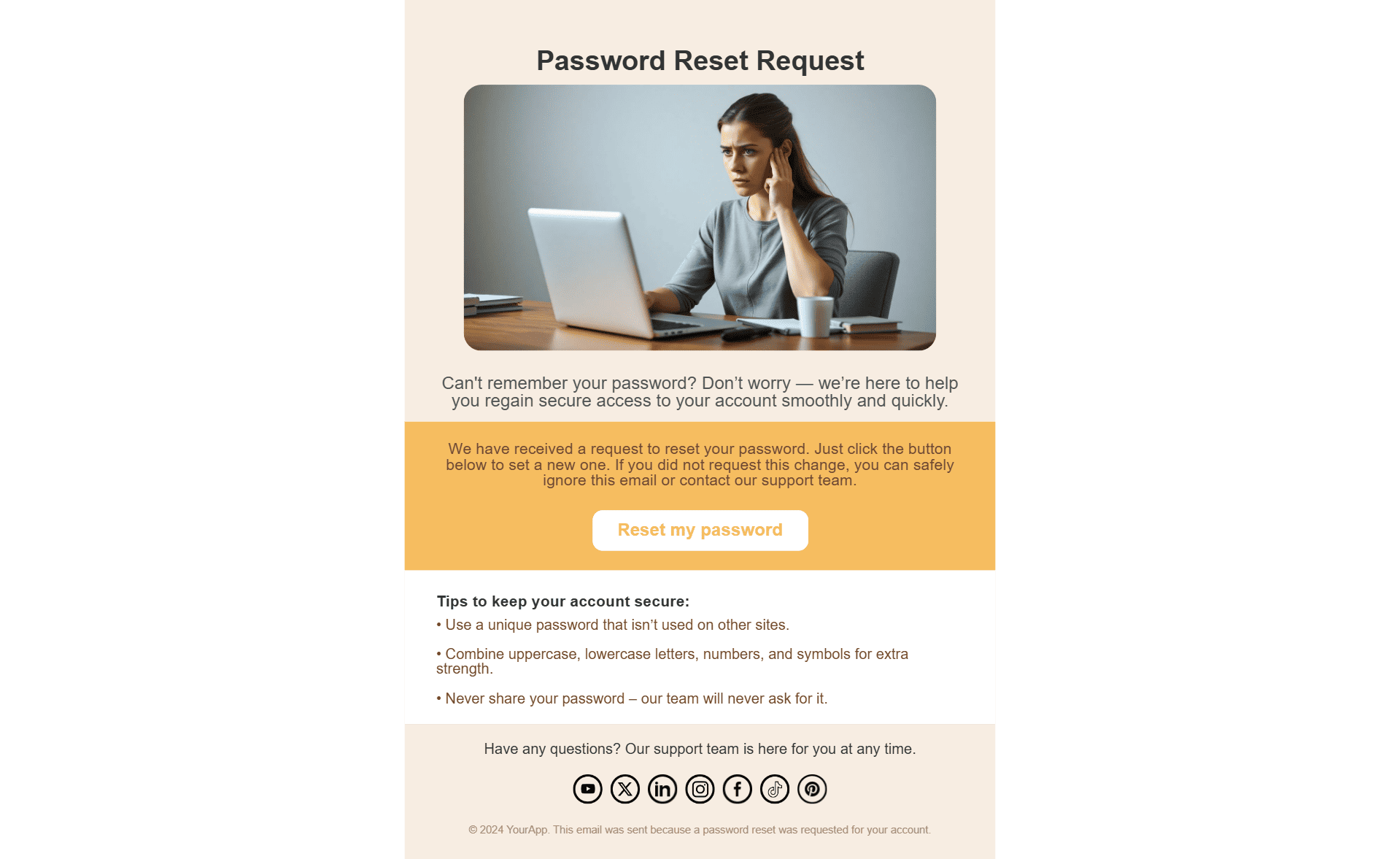
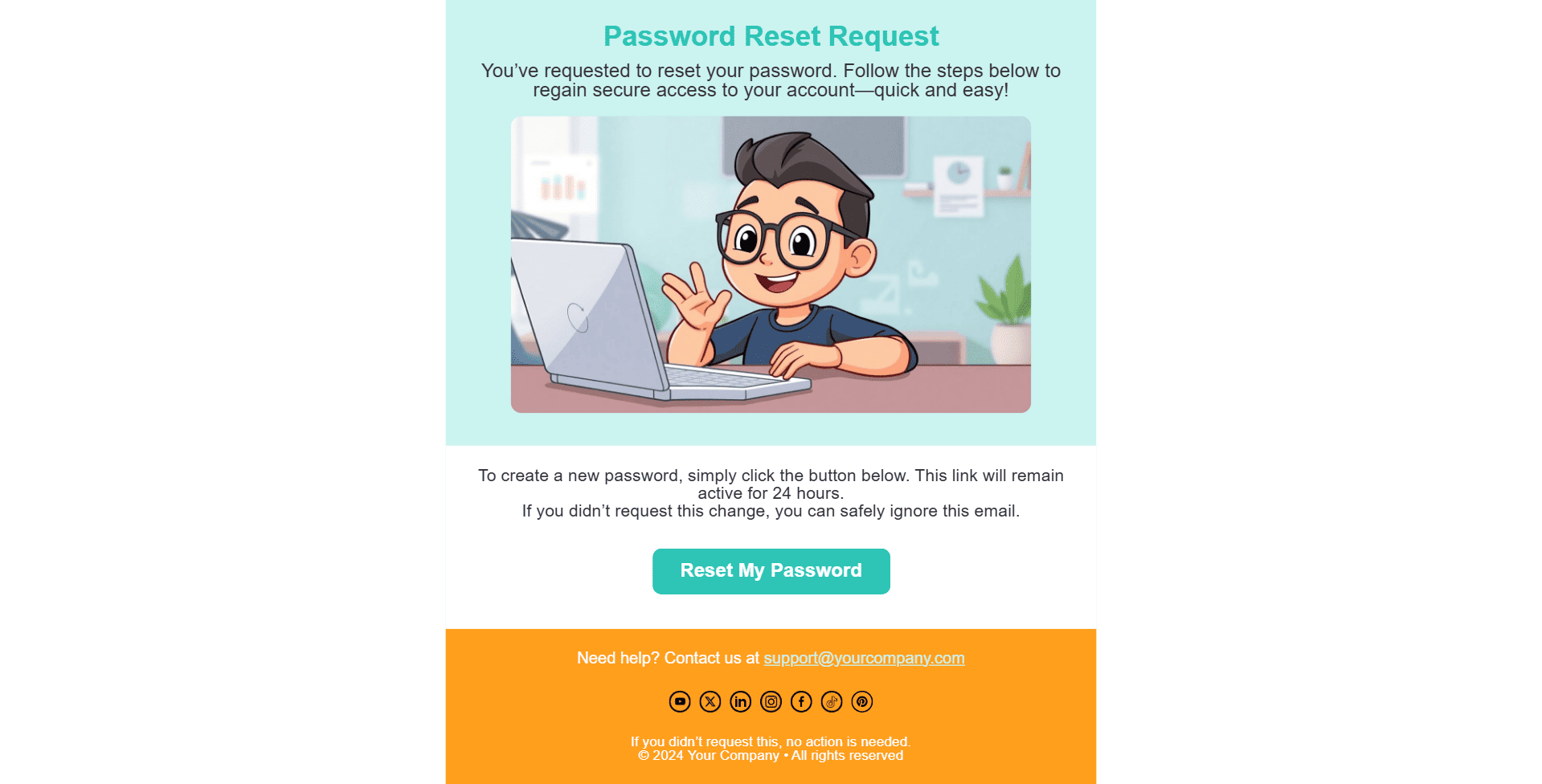
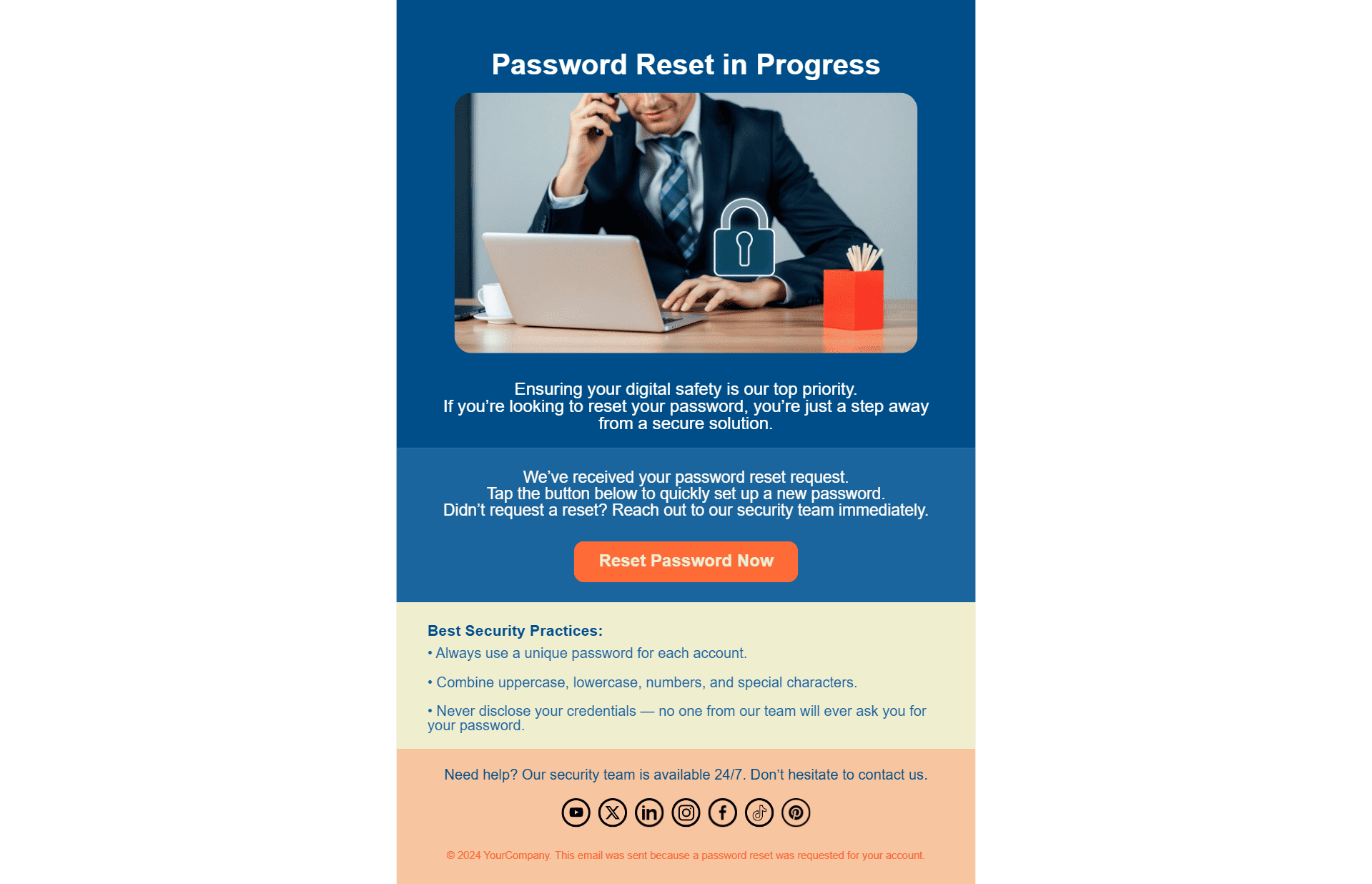



What is a password‑reset email?
A password‑reset email is a time‑sensitive, single‑purpose message that delivers a secure link or code so the user can create a new password. It must authenticate the request, guide the user clearly, and expire quickly to prevent hijacking.
Why great reset emails matter
Sky‑high open rates:
Transactional security emails boast 70 %+ opens (Mailgun, 2024), your highest‑visibility touch‑point after onboarding.
Trust = retention:
Fast, transparent resets cut frustration and keep churn down; 39 % of SaaS cancellations cite “login issues” as a trigger (Recurly study, 2023).
Support cost slash:
Each DIY reset saves ~€4 in help‑desk time. At 10 k resets/month, that’s >€40 k annual savings.
Revenue re‑engagement:
68 % of users who complete a reset log back in and perform a revenue‑driving action within 24 h (Amplitude benchmark, 2024).
How to do it in 5 easy steps
- 1
Trigger immediately: Send the reset email within 5 seconds of the request to reassure users it worked.
- 2
Use a short, unique link: 64‑character token, HTTPS, auto‑expires in 30–60 min.
- 3
State the expiry clearly: "This link is valid for 30 minutes", reduces ‘link expired’ tickets by 22 %.
- 4
Add a safety note: Remind users to ignore the email if they didn’t request it and include a report‑abuse link.
- 5
Offer a fallback: Plain‑text code (for corporate firewalls) and a contact‑support link for locked‑out scenarios.
Best Practices
1. Prioritise security signals
Show your company logo, domain‑matched sender, and a concise ‘Why you’re receiving this’ line to defeat spoofing anxiety.
What's good: DMARC‑aligned ‘from’ address plus BIMI logo lifted click‑through **11 %** in Postmark A/B test (2024).
Tip: Avoid attachments; many security filters flag them.
2. Keep copy ultra‑concise
Users are in a problem‑solving mindset. Aim for ≤ 50 words before the button; place legal/security details below.
What's good: Reducing body text from 120→45 words shaved 4.2 seconds off completion time (Hotjar heatmap, 2025).
Tip: Use verbs: “Reset password” > “Click here”.
3. Provide a safety net
Offer a secondary channel (SMS, authenticator app) in case email is compromised or delayed.
What's good: Dual‑channel resets lower support calls **16 %** for B2C fintech apps.
Tip: If you can’t build SMS today, add a one‑time ‘contact support’ magic link that pre‑fills the user’s email.
4. Make expiry & session revocation explicit
Tell users exactly when the link expires and automatically log out any active sessions created before the reset to prevent token reuse.
What's good: Highlighting expiry inside the email copy reduced repeated reset attempts by **18 %** (Okta research, 2024).
Tip: After the reset, redirect to an in‑app success screen that shows a live countdown until automatic logout.
6 High-Converting Welcome Email Subject Lines
- Reset your {{company}} password
- Here’s your {{company}} password reset link
- {{company}} password assistance
- Forgot your password? Let’s fix that
- Action required: reset access to your account
- Secure password reset instructions inside
Frequently asked questions
How long should the reset link stay active?
30 minutes is the sweet spot, long enough for most users, short enough to limit token‑reuse risk.
Can I allow multiple requests in a short window?
Yes, but always invalidate previous tokens when a new one is issued to block brute‑force replay attacks.
Plain text or HTML?
HTML enables a clear button and brand cues, but include a plain‑text fallback link/code for strict clients.
Should I force users to log out from other devices after reset?
Absolutely, ending all active sessions prevents a compromised device from retaining access and aligns with zero‑trust principles.
Is a passwordless ‘magic link’ reset safer?
It’s convenient, but security shifts to the email account. Require MFA and set tight link expiry to match the risk profile.
How can I monitor for abuse of the reset endpoint?
Rate‑limit by IP, track per‑user request velocity, and alert the security team on anomalies or spikes in failure rates.
